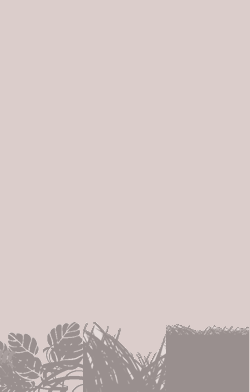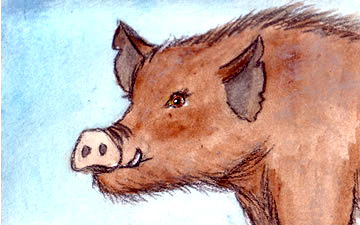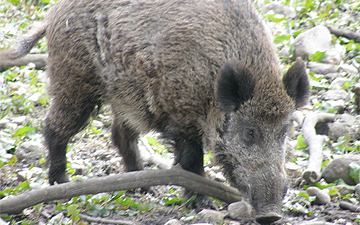Wild boar (Sus scrofa) is a species of pig (including many subspecies), part of the biological family Suidae. It is the wild ancestor of the domestic pig, an animal with which it freely hybridises.[2] Wild boar are native across much of Northern and Central Europe, the Mediterranean Region (including North Africa’s Atlas Mountains) and much of Asia as far south as Indonesia. Populations have also been artificially introduced in some parts of the world, most notably the Americas and Australasia; principally for hunting. Elsewhere, populations have also become established after escapes of wild boar from captivity.[3]
The body of the wild boar is compact; the head is large, the legs relatively short. The fur consists of stiff bristles and usually finer fur. The colour usually varies from dark grey to black or brown, but there are great regional differences in colour; even whitish animals are known from central Asia.[5] During winter the fur is much denser.
Adult boars average 120–180 cm in length and have a shoulder height of 90 cm.[6] As a whole, their average weight is 50–90 kg kilograms (110–200 pounds), though boars show a great deal of weight variation within their geographical ranges.[7] In central Italy their weight usually ranges from 80 to 100 kg; boars shot in Tuscany have been recorded to weigh 150 kg (331 lb). A French specimen shot in Negremont forest in Ardenne in 1999 weighed 227 kg (550 lb). Carpathian boars have been recorded to reach weights of 200 kg (441 lb), while Romanian and Russian boars can reach weights of 300 kg (661 lb).[6] Generally speaking, native Eurasian boars follow the Bergmann’s rule, with smaller boars nearer the tropics and larger, smaller-eared boars in the North of their range.
The continuously growing tusks (the canine teeth) serve as weapons and tools. The lower tusks of an adult male measure about 20 cm (7.9 in) (from which seldom more than 10 cm (3.9 in) protrude out of the mouth), in exceptional cases even 30 cm (12 in). The upper tusks are bent upwards in males, and are regularly ground against the lower ones to produce sharp edges. In females they are smaller, and the upper tusks are only slightly bent upwards in older individuals.[citation needed]
Wild boar piglets are coloured differently from adults, being a soft[vague] brown with longitudinal darker stripes. The stripes fade by the time the piglet is about half-grown,[clarification needed] when the animal takes on the adult’s grizzled grey or brown colour.
Litter size of wild boars may vary depending on their location. A study in the Great Smoky Mountains National Park in the US reported a mean litter size of 3.3. A similar study on Santa Catalina Island, California reported a mean litter size of 5.[8] Larger litter sizes have been reported in Europe.[citation needed]
(From Wikipedia, September 13th, 2010)
– – –





